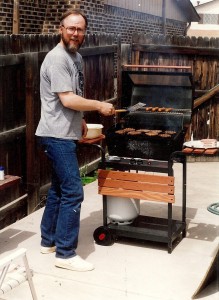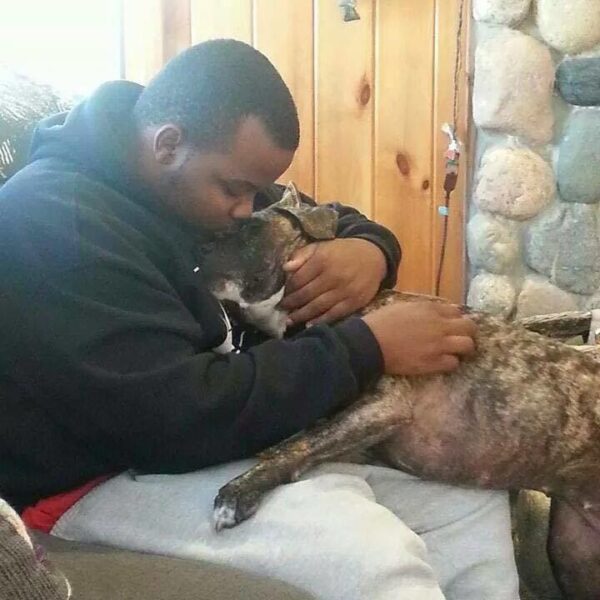On April 20, 1999, I woke up early and went to work. It was right around lunchtime when I overheard my co-workers talking about the school where my father worked—Columbine High School in Littleton, Colorado. I heard one person say, “those stupid kids at Columbine.” To which I replied, “Watch your mouth—my dad works at Columbine!” All of the color drained out of their faces.
That’s when I learned there had been a shooting at my Dad’s school, but I had no idea the magnitude, or the horrible truth that awaited me.
I called my mom to see if she had heard from Dad, but couldn’t reach her—the line was busy. With every unsuccessful attempt, my body started shaking, I kept insisting that he would be fine. Eventually one of my co-workers insisted on driving me to my parent’s house.
On the way, I noticed roads were blocked off, and helicopters flying above. Still unaware of the enormity of the situation, I wondered what was really going on—I was so confused. Was the shooting still active? Why is this happening? I told myself, “It’s a big school… he’s fine… people are overreacting.”
When I arrived at my parents’ house, family and neighbors were on their knees in front of the new television my dad had recently bought. As I walked in I saw horrifying images of students running from the school. It was surreal. The images were like what you would see in a horror movie.
I will never forget thinking, Dad is going to be so mad about being shot in the foot—how is he going to coach?
One image will forever haunt me: a sign in the window that said, “ONE BLEEDING TO DEATH.” All I could think of was the poor student that sign was referring to. It wasn’t until days later that I would find out this sign was referring to my dad.
Feeling helpless, my sister decided to go to the park next to the school to find Dad or get some answers.
When my sister arrived at the park, a student told her that Dad was shot in the foot and she called to tell us the terrible news. I will never forget thinking, Dad is going to be so mad about being shot in the foot—how is he going to coach?
We rushed to the hospital only to learn that Dad wasn’t there. The hospital’s chaplain had wait in a dark, sad room. A police officer then came in and said that we needed to go to the elementary school by Columbine.
This was just the beginning of a horrifying—and seemingly never-ending—quest for answers about Dad’s whereabouts that wouldn’t be known until the next day.
When I arrived at the park, I was desperate to get answers, so I asked a reporter if I could go on camera to ask if anyone had seen my dad. His response: he was only concerned about the kids at that time.
Later that day, the sheriff asked something that nobody ever wants to be asked: What was he wearing and could we get his dental records. My mother knew exactly what he was wearing because every morning she kissed him goodbye. But that morning, they hadn’t kissed goodbye; they had argued the night before so she just waved to him as he pulled out of the driveway, unaware that she would never kiss him again.
Two victims’ advocates went home with us and we spent the night with the phone book, calling hospitals, news stations, anyone who may know something. Someone suggested that we call the coroner’s office and my mother started screaming and threw the phone book across the room. She kept saying that he must be scared and hiding somewhere in the school. But the rest of the family knew that wasn’t true. Dad wasn’t a hider.
The next morning, Mom got a call from a reporter at the Denver Post who said, “Your husband was killed. Do you have a comment?”

When the sheriff asked my mom for a photo to ID the body, she collapsed and vomited. I remember laying in the front lawn and staring up at the sky. I remember thinking about how cookies were made—how the flour stuck to the sugar. I felt outside of my body, unable to process anything. My body numb, my mind broken, my soul shattered.
Pretty soon the media started showing up—and they haven’t stopped, even after 17 years.
We later learned that Dad did not die hiding or cowering in fear, but ran INTO the school from the parking lot when he saw the shooters attacking. He ran into the cafeteria jumping on top of tables and yelling at kids to get out. When the shooters arrived at the cafeteria, no one was there—thanks to Dad.
Witnesses say Dad and his best friend ran upstairs and were running at the shooters when he was shot several times. One bullet went through his shoulder and came out his mouth, knocking out his teeth. Somehow, he managed to get back up and fell into the science room where several students were hiding —that’s why everyone in the media thought he was a science teacher.
The kids began staunching his wounds, even using their t-shirts to help stop the bleeding. They called 911 who told them to stay put and that someone would be there soon. Help did not arrive for three-and-a-half hours. During that time, the kids took out his wallet and showed him pictures of us, Mom and his grandkids.
The first thing my dad asked when the SWAT team arrived was if all the kids made it out okay. Knowing Dad wasn’t going to make it, a SWAT team member told him, “Yeah.”
We spent years saying that Dad was in the wrong place at the wrong time, but over time, we came to realize that he was in the right place at the right time—because he saved hundreds of kids’ lives.
And then Dad said, “I want you to tell my girls I love ‘em,” and then, he died. He didn’t want to die in front of his students.
Now, for me and my family, there’s only life before Columbine and life after Columbine. On any given day I can tell you exactly how many days it’s been since Columbine.
Ever since Dad’s death, I’ve always wondered what happened to the boys who planned the attack that day. My curiosity led to me changing my college major to psychology. Now I work with offenders who have committed violent acts.
When we give up on people we perceive to be bad, they will end up bad, and innocent people will suffer. I try to love the unlovable in order to prevent further tragedies—to give people a second chance to live a non-violent life. If only those boys had that chance.
We spent years saying that Dad was in the wrong place at the wrong time, but over time, we came to realize that he was in the right place at the right time—because he saved hundreds of kids’ lives.





